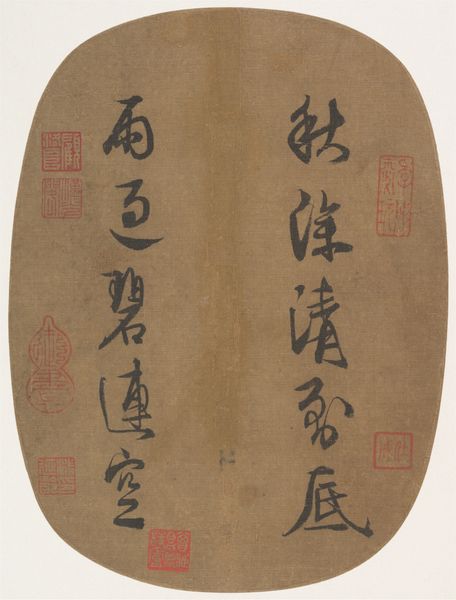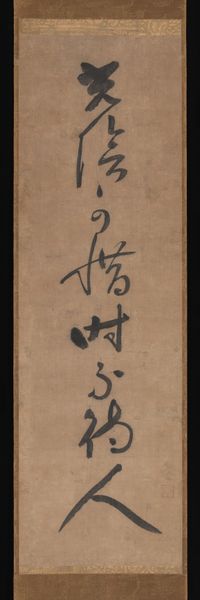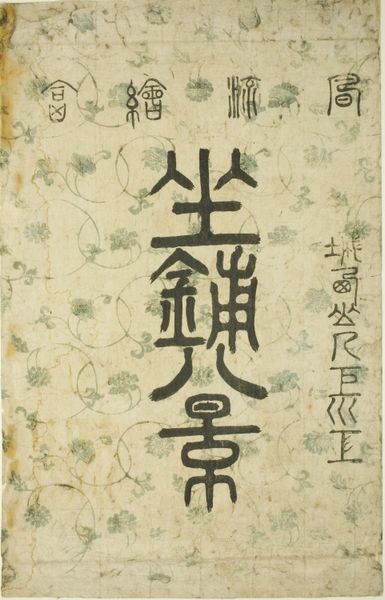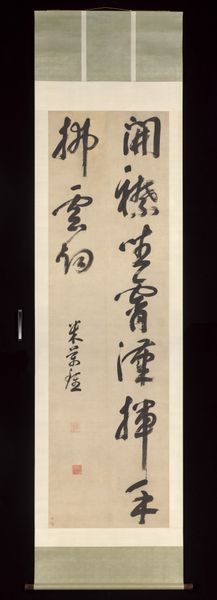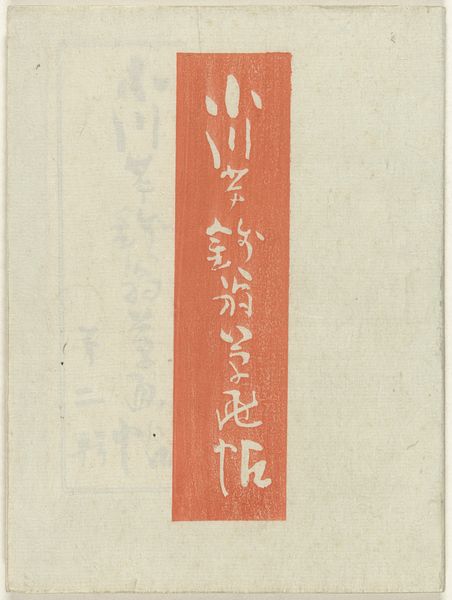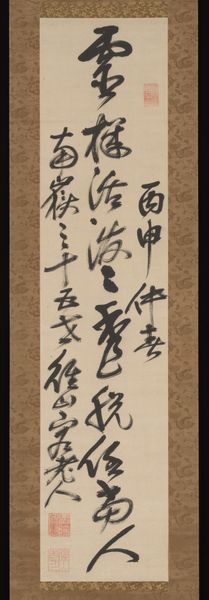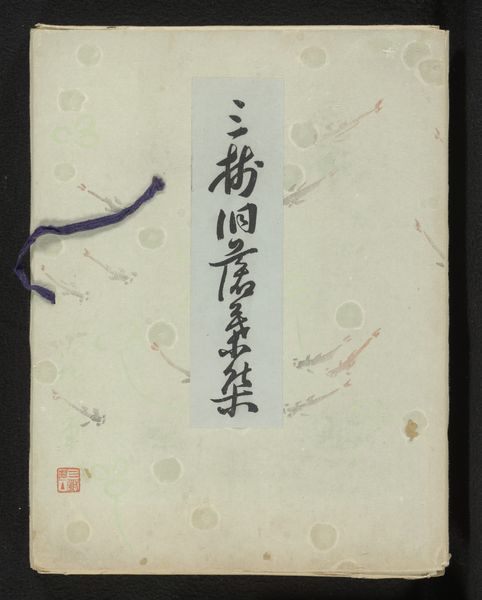
paper, ink
#
asian-art
#
figuration
#
paper
#
ink
#
coloured pencil
#
orientalism
#
line
#
calligraphy
Dimensions: width 430 mm, width 431 mm, diameter 41 mm, height 7 cm, width 47 cm, depth 7.5 cm
Copyright: Rijks Museum: Open Domain
This calligraphy piece was created by Zhang Jian, who lived from 1853 to 1926, during a period of immense change in China. Zhang Jian, as an elite scholar and industrialist during the late Qing Dynasty and early Republic of China, embodies the complex interplay between tradition and modernity. His calligraphy exists within a context of intense cultural negotiation, when China was grappling with Western influence while trying to preserve its cultural heritage. This piece, beyond its aesthetic qualities, reflects Zhang Jian's identity and values. As a scholar deeply rooted in Confucian ideals, Zhang Jian would have used calligraphy as a form of self-expression and moral cultivation. The act of writing itself was a meditative practice, aligning the mind and body with the ideals of harmony and balance. At the same time, he was also advocating for industrialization, which at the time was seen as a rejection of traditional values. Through this piece we can see how Zhang Jian lived at the intersection of traditional values and the drive for modernization.
Comments
rijksmuseum about 2 years ago
⋮
This pair of calligraphy scrolls is a gift from a scholar to his scholar friend to hang in the study. The texts read in translation: ‘The things that are clean easily become dusty, the things that are white easily become dirty’ and (when making pottery) ‘when it is hard, it is easy to break, when it is soft it is easy to shape.’
Join the conversation
Join millions of artists and users on Artera today and experience the ultimate creative platform.
